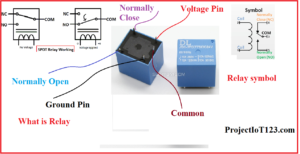How Does a Relay Switch Function?
Relay Switch Function
A relay switch is a device that controls an electrical circuit. It consists of a casing with a core made of copper windings. In addition, there is an armature, which is made of a metal contact and spring support. When the switch is energized, the armature attracts the wires, which are connected to the circuitry outside.
A relay switch can operate by switching the current and voltage in two directions. The first is an open circuit, and the other is a closed circuit. A bipolar transistor can be used to perform the relay function. When both the base and collector terminals are positive, a transistor will function as a relay switch.
A relay switch can also have either a single-pole or a double-pole contact. Single-pole contacts carry current through one circuit, while double-pole contacts carry current through two circuits. The maximum number of poles and contacts in a relay depends on its design. A relay switch can have up to twelve poles depending on the type of circuit it is controlling.
A relay switch can serve a number of different functions, from acting as a switch to providing an amplifier. They can also be used to control high voltage and current circuits, which can help protect appliances during transmission. They are also useful in safety-critical logic, such as in radio transmitters and receivers.

How Does a Relay Switch Function?
Relays are essential parts of most mechanical and electronic appliances. They convert low-voltage input to high-current output. They were originally used in long-distance telegraph circuits as signal repeaters. They were even used in early computers and telephone exchanges. They are available in a variety of different types to meet the different needs of different applications.
Relays are electromechanical devices that use an electromagnet to operate their contacts. They can control a wide range of circuits, including AC circuits and motors. Moreover, a relay can be used to control multiple circuits using only one signal. The coil and spring of a relay can be disassembled by removing the case of the device using a screwdriver.
The first electrical relay was invented by Joseph Henry in 1835. His prototype consisted of a metal plate and a pivoted metal point. An electrical charge would pass through the point, if a wire connected to the coil was placed close enough to it. This completed the circuit and provided power. Joseph Henry’s design proved to be an effective one and became widely known. Since then, many people have improved on it.
The relay can control other circuits by opening or closing contacts in another circuit. It can be used to control AC circuits, motors, and heaters. There are many different types of relays and they can be used in many different ways. The best choice for your application is the one that best suits your needs.